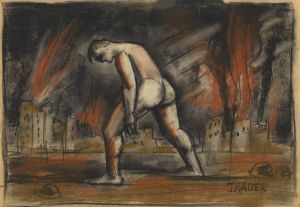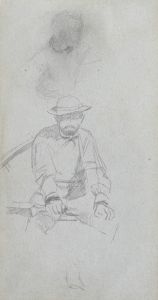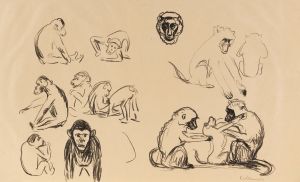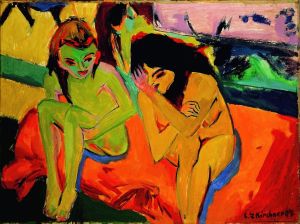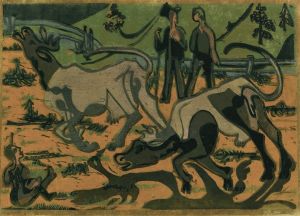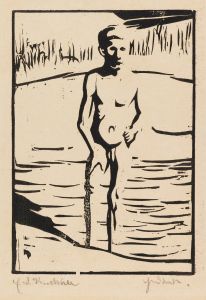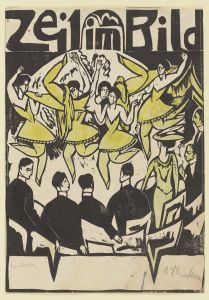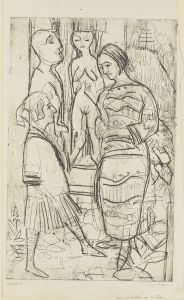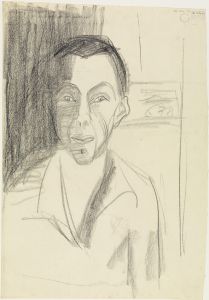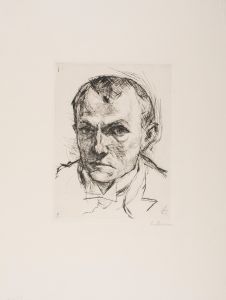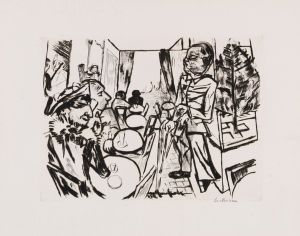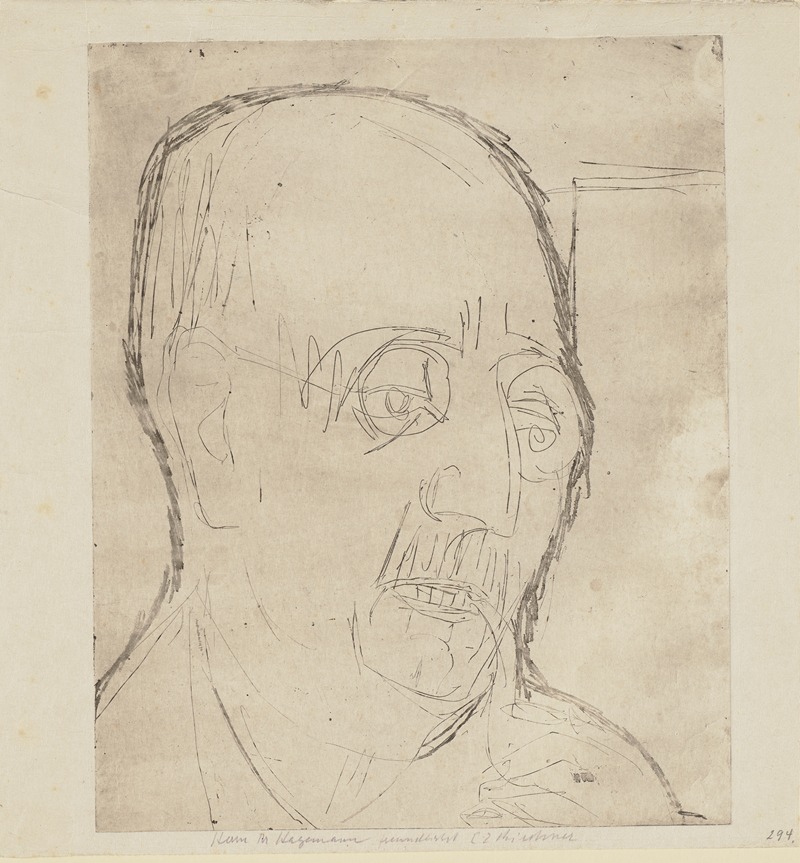
Portrait Carl Hagemann
A hand-painted replica of Ernst Ludwig Kirchner’s masterpiece Portrait Carl Hagemann, meticulously crafted by professional artists to capture the true essence of the original. Each piece is created with museum-quality canvas and rare mineral pigments, carefully painted by experienced artists with delicate brushstrokes and rich, layered colors to perfectly recreate the texture of the original artwork. Unlike machine-printed reproductions, this hand-painted version brings the painting to life, infused with the artist’s emotions and skill in every stroke. Whether for personal collection or home decoration, it instantly elevates the artistic atmosphere of any space.
"Portrait Carl Hagemann" is a painting by the German expressionist artist Ernst Ludwig Kirchner, created in 1926. Kirchner was a leading figure in the German Expressionist movement and one of the founding members of the influential artist group Die Brücke (The Bridge), which sought to create a new form of artistic expression that bridged traditional and modern styles.
The subject of the painting, Carl Hagemann, was a prominent German chemist and an avid art collector, particularly known for his support of the Expressionist movement. Hagemann's collection included works by several members of Die Brücke, and he was a significant patron for Kirchner and his contemporaries. His support was crucial during a time when Expressionist art was often met with resistance and criticism.
Kirchner's portrait of Hagemann is notable for its vibrant colors and dynamic brushwork, characteristic of the artist's style. The painting reflects Kirchner's interest in capturing the psychological essence of his subjects rather than merely their physical likeness. This approach is evident in the way Kirchner uses exaggerated forms and bold colors to convey Hagemann's personality and presence.
The composition of the portrait is both intimate and expressive. Kirchner often employed a vivid color palette and energetic lines to evoke emotion and movement, and this work is no exception. The use of color in "Portrait Carl Hagemann" is particularly striking, with contrasting hues that draw the viewer's attention to Hagemann's face and hands, emphasizing his intellectual and cultural contributions.
Kirchner's technique involved a combination of rapid brushstrokes and a keen sense of form and structure, which can be seen in the way he captures the textures of Hagemann's clothing and the background. The portrait is not just a representation of Hagemann as an individual but also a reflection of the broader cultural and artistic milieu of the time.
The painting is part of the collection of the Städel Museum in Frankfurt, Germany, which houses an extensive array of works from the Expressionist period. The museum's collection provides valuable insight into the development of modern art in Germany and the role of patrons like Hagemann in supporting avant-garde artists.
Ernst Ludwig Kirchner's work, including "Portrait Carl Hagemann," remains influential in the study of Expressionism. His ability to convey complex emotional and psychological states through his art continues to be celebrated, and his portraits are considered significant contributions to early 20th-century modernism.
The relationship between Kirchner and Hagemann exemplifies the dynamic between artists and patrons during this period, highlighting the importance of support and collaboration in the arts. "Portrait Carl Hagemann" stands as a testament to this relationship and to the enduring impact of Expressionist art.





